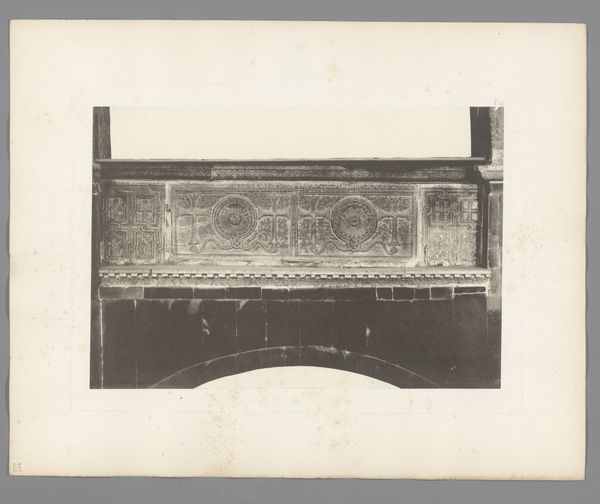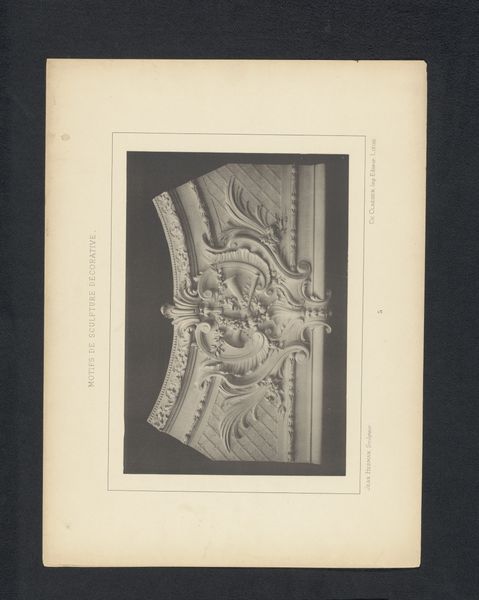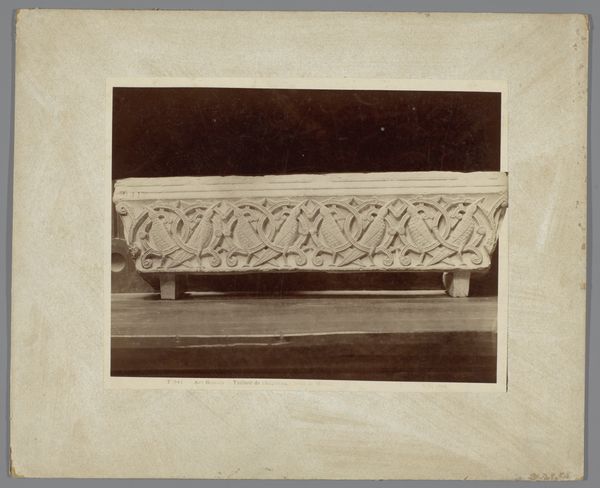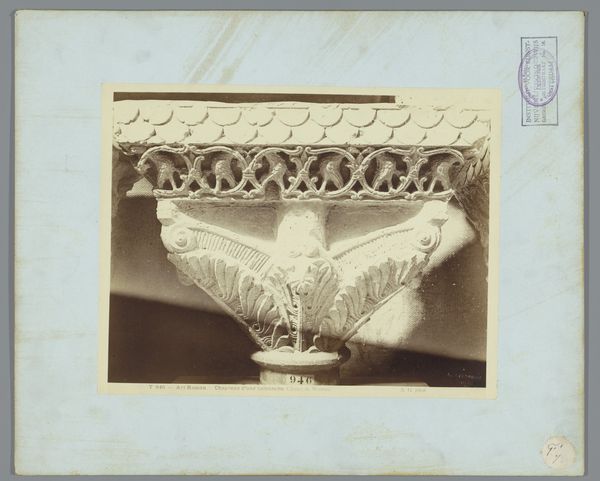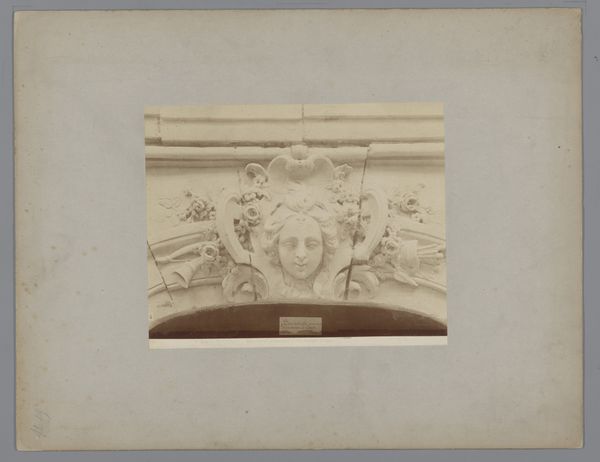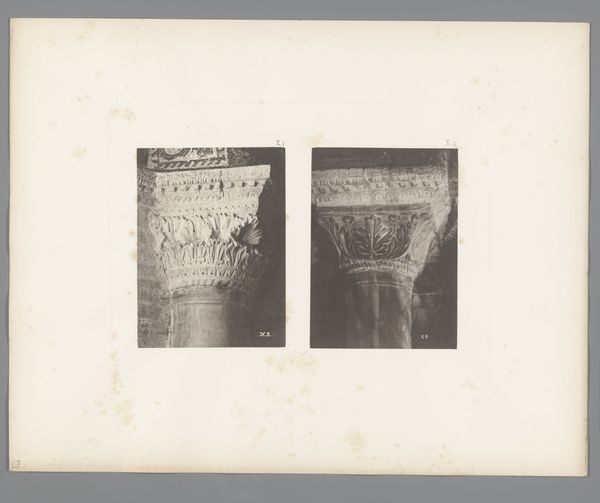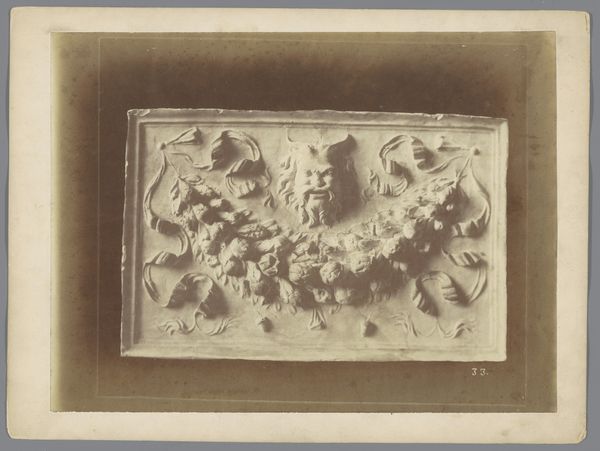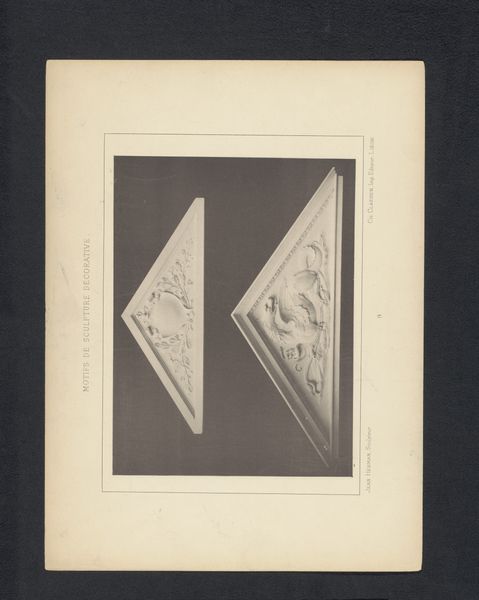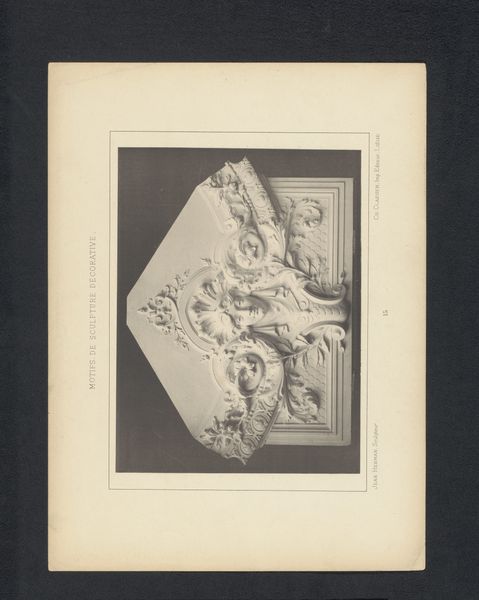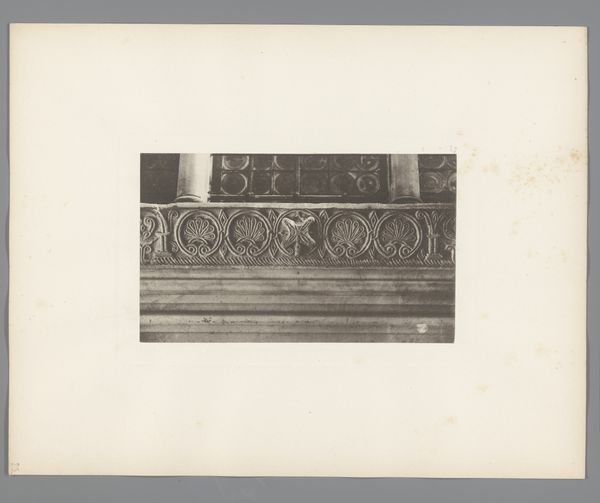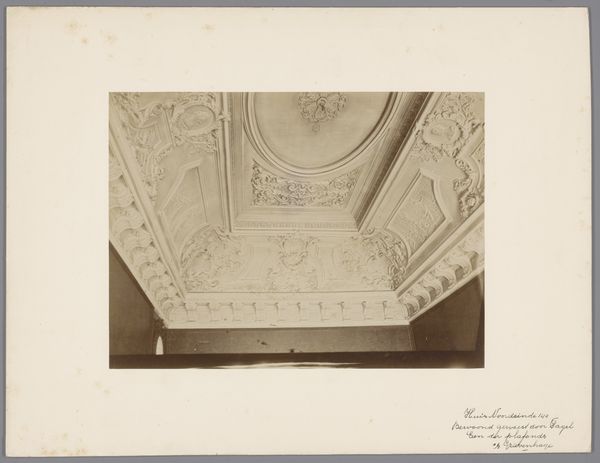
Hek voor een kapel van de kathedraal de Notre-Dame te Évreux c. 1875 - 1900
0:00
0:00
adolphegiraudon
Rijksmuseum
Dimensions: height 193 mm, width 255 mm
Copyright: Rijks Museum: Open Domain
Editor: We're looking at a photograph by Adolphe Giraudon, taken sometime between 1875 and 1900, depicting a wrought iron gate for a chapel at the Notre-Dame cathedral in Évreux. The high contrast almost makes it seem like a drawing rather than a photograph of a sculpture. What are your thoughts on this? Curator: This image reveals the enduring appeal of Neoclassicism in late 19th-century France, particularly within the institutional context of the Church and its intersection with national heritage. Notice how photography, a relatively new medium then, is employed not to document 'reality' but to further propagate an idealized, classical aesthetic. Who was the audience, and what values were they meant to internalize through viewing this imagery? Editor: That's a great point – who *was* the intended audience? Was this meant to be purely archival, or something more propagandistic? Curator: I suspect it served both purposes. The photograph documented the gate, aiding in preservation and potential restoration efforts, but it also served to reinforce the Church's ties to a glorious past, subtly legitimizing its socio-political position. How might this 'classical-realist' style have resonated with a society grappling with industrialization and urbanization? Editor: I imagine the classical style provided a sense of stability and order during a time of intense social and technological change. The clean lines and idealized figures probably evoked a sense of tradition and permanence. Is it typical for the church to adopt neoclassicism? Curator: Absolutely. The Church has historically aligned itself with dominant artistic and philosophical movements. Neoclassicism, with its emphasis on reason and order, provided a visually powerful means of conveying authority and moral rectitude, especially within the context of nation-building. Editor: I see. So the photo isn't just a pretty picture of an old gate; it’s part of a bigger story about power, representation, and societal values. That's really fascinating to consider. Curator: Precisely. Art doesn't exist in a vacuum. Examining its historical and social context allows us to decode the messages embedded within and understand its impact on society. I learned to not take such an aesthetic style at face value anymore.
Comments
No comments
Be the first to comment and join the conversation on the ultimate creative platform.
